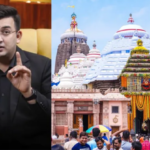Delhi’s air quality back in ‘severe’ category after Diwali, toxic haze covers city
NEW DELHI, NOV 14 : Delhi on Tuesday woke up to ‘severe’ air quality, two days after residents violated the Supreme Court’s firecracker ban on Diwali. Toxic haze enveloped the national capital and most areas recorded a ‘severe’ category air quality index (AQI), according to the Central Pollution Control Board (CCB).
At 6 am, the AQI in Bawana was 434, at 404 in Dwarka Sector 8, at 430 in ITO, at 418 in Mundka, at 418 in Narela, at 402 in Okhla, and at 417 in both Rohini and RK Puram, among others.
SAFAR-data also showed that the national capital’s air quality on Tuesday morning was in the ‘severe’ category.
An AQI between zero and 50 is considered ‘good’, 51 and 100 ‘satisfactory’, 101 and 200 ‘moderate’, 201 and 300 ‘poor’, 301 and 400 ‘very poor’, 401 and 450 ‘severe’ and above 450 ‘severe plus’.
On Monday, the national capital’s overall AQI was recorded in the ‘very poor’ category at 358, according to the CPCB. The situation was the same in Delhi’s neighbouring cities of Noida and Gurugram in the national capital region (NCR), with the average AQI settling at 363 and 349, respectively.
Here are the key developments in Delhi’s pollution levels
The Delhi Police on Monday filed as many as 97 cases in connection with the bursting of firecrackers during the Diwali celebrations, despite a blanket ban by the Supreme Court. With 29 and 28, respectively, most cases were registered in East Delhi and southwest area of the city. No cases were filed in Rohini and outer northern areas of Delhi.
The New Delhi Municipal Council (NDMC) has doubled the parking fees at locations under its jurisdiction in the wake of increasing pollution levels in Delhi. The measure, effective immediately, will be in place until January 31, 2024.
The NDMC has increased the parking fees for both on-road and off-road parking to twice their previous rates. As many as 91 parking locations are within the ambit of the NDMC, with it directly managing 41 while outsourcing the rest. High-traffic and prominent areas such as those between Rajpath and AIIMS, Sarojini Nagar market, Khan Market, and INA, among others, come under the NDMC’s parking management.
The drop in Delhi’s air quality after Diwali triggered an exchange of barbs between the ruling Aam Aadmi Party (AAP) and the BJP. Dehi Environment Minister and AAP leader Gopal Rai blamed the BJP for being unwilling to “fulfil its responsibility” of abiding by the Supreme Court’s firecracker ban. “It is unfortunate. BJP wanted firecrackers to be burnt and the police is with BJP in all three states (Delhi, Haryana, Uttar Pradesh),” he said on the city’s pollution levels.
Delhi BJP Vice-President Kapil Mishra, in response, lauded Delhi residents for flouting the ban, calling the act voices of “resistance, freedom and democracy”. Taking to X, he said that he is “proud” of the city and added that people are “bravely defying the unscientific, illogical, dictatorial ban”.
Former Uttar Pradesh Police chief Vikram Singh blamed Delhi Police’s “complicity” in the failure to implement the firecracker ban strictly. Speaking to India Today TV, he said that the prohibition should have commenced at least three days in advance, and included “all sales, and purchase and stocking of crackers, especially Chinese-made crackers”.
Delhi’s air quality dipped to the ‘poor’ category from ‘severe’ after much-needed rain on the intervening night of Friday (November 10) and Saturday (November 11), which significantly brought down pollution levels a day before Diwali. On the festival day on Sunday, the city recorded its best air quality in eight years, with the average AQI recording at 218. However, extensive bursting of firecrackers towards late evening and then night deteriorated Delhi’s air quality yet again.
-PTI





